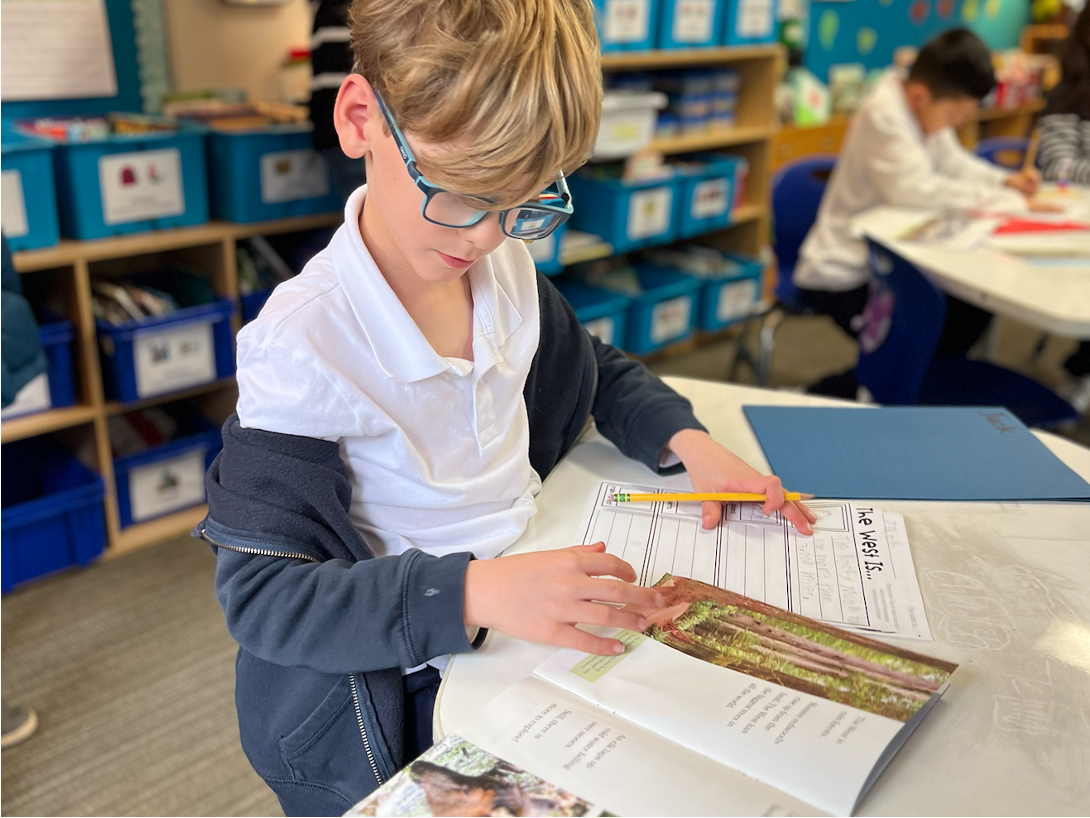“My topic sentence is, ‘The Native Americans helped the buffalo and the buffalo helped the Native Americans.’ Then I say why.”
2nd Grade readers, writers, and social scientists this week revised their evidence-based paragraphs, written to summarize recent readings on early Native peoples of the Great Plains. Over the last couple of weeks, students read decodable texts about early Native practices within the prairies, including hunting, burning, planting and stewarding strategies. They learned about the relationships between people, buffalo, and the larger ecosystem in differentiated small-group readings, as well as through teacher read-alouds. Students practiced active reading and comprehension strategies, like previewing, looking at text features, making predictions, asking questions, comparing and contrasting, and more.
To summarize main ideas, they created timelines, practicing breaking information into bullet points and organizing it temporally. They also used pictures from the books to organize a large visual timeline. This week, they finalized paragraphs with a topic sentence, three pieces of evidence (examples that connect), and a concluding statement, all while applying what they have learned about capitalization, finger spacing, punctuation, and using a broad range of “topic specific” words. In partner pairs, they self-assessed their own writing and their partner’s using a checklist.
Partners helped each other find examples in their writing that met the guidelines, and gave suggestions. Beginning their next read-aloud, children shared what they each noticed during the independent previewing phase.
One student said, “I saw that Christopher Columbus named them ‘Indians’ but that’s because for some reason he thought he was in India. And that wasn’t really their name.”
Another added, “I looked at the pictures and see this is going to be about some new things.”
I saw that Christopher Columbus named them ‘Indians’ but that’s because for some reason he thought he was in India. And that wasn’t really their name.
Reading and writing as ways of finding out and explaining are newer for these young students, as their mastery of decoding increases they can spend more effort on the analysis and knowledge-building parts of reading. Along the way they have lots of both support and “high ceilings” for growing their skills as well as their nuanced understanding of historical relationships that impact our government and environment to this day.

